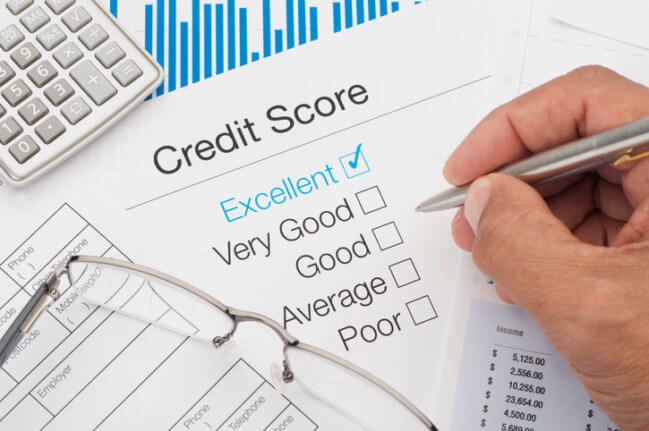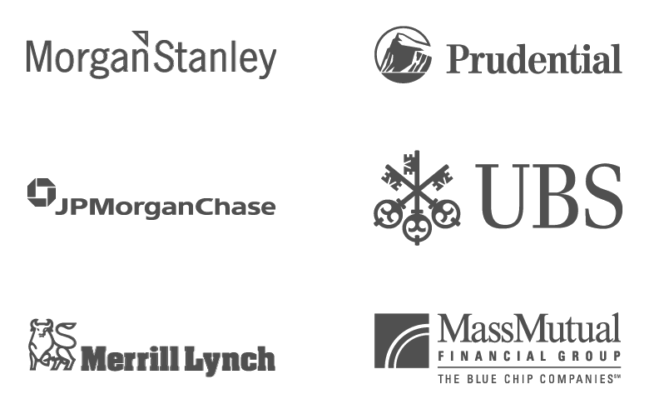You looked up your credit score online or requested it from your bank — nice job. It’s important if you’re moving into a new apartment, applying for a loan or signing up for a credit card. But what does that number really mean? Let’s look at how the credit range scale breaks down by rating type as well as numerical score. We’ll also explain where you should fall in order to qualify for certain financial products and services.
Your credit score is a number ranging anywhere from 300 to 850 in the credit range scale. It’s generated using a Fair Isaac Corp. credit-scoring algorithm. (This is why it’s also known as your FICO score, in case you were wondering.) Another company called VantageScore also generates credit reports using the same credit range scale as FICO scores use. Both look at the same variables to calculate your score, so the two numbers move up or down in tandem.
Where Bad/Very Poor Scores Fall On the Credit Range Scale
Either a FICO score ranging from 300-579 or VantageScore of 300-549 indicates that you have very poor credit. As a result, you probably won’t qualify for a loan with this score. And even if you do, you’ll have to pay very high-interest rates. According to Experian, 17% of consumers fall within this range. If your number’s considered very poor/bad on the credit range scale, you should wait to apply for a home loan. Ask a financial advisor the best way to improve your credit score, based on your current circumstances.
Where Fair Scores Fall On the Credit Range Scale
A FICO score between 580-669 is categorized as fair on the credit range scale. Lenders consider borrowers in this range “subprime,” meaning you’ll pay high-interest rates if you can get approved for loans. It’s not uncommon, though: Around 20% of consumers fall into this range. As with the bad/very poor group, if you’re somewhere in this credit range scale, wait to apply for a loan. Instead, work on improving your credit score with help from a financial planner.
One good way to improve your score is disputing errors on your credit report. Next, pay your monthly bills on time, every single time. Third, pay off your credit cards and don’t get too close to your approved credit limits.
What Range of Numbers Indicate That You Have Good Credit?
If your FICO score falls between 670-739, you’ve got good credit. That means you’ll pay medium interest rates on any approved loans or credit cards. The average FICO score is 700; 22% of all people fall into this category on the credit range scale. On the VantageScore scale, a good credit rating is 700-749. Ideally, your number should be in or above this credit score range if you’re applying for a home loan.
How Lenders Define Very Good/Excellent Credit Scores
Surprisingly, around 38% of Americans have either a very good or excellent credit score. Here’s how those numbers break down:
- Very Good – A FICO score of 740-799 puts you firmly in the “very good” credit range scale. Individuals with scores above 750 may qualify for 0% financing on cars and credit cards. They’ll also get better-than-average interest rates on home loans. If this is where your credit score falls, go ahead and apply for any loan or credit card you want!
- Excellent – A FICO score of 800 or above indicates that your credit is excellent or exceptional. In fact, 1 in 5 U.S. consumers have scores that fall within this credit range scale. Anyone with an excellent credit score applying for a home loan will receive the best possible interest rates.
What Factors Determine Your Credit Score Number?
Your credit score’s based on your reported credit history, not your income or net worth. Lending institutions use your number to predict whether you’ll be able to pay back loans in full and on time. In addition, lenders also review your income and total debt load when deciding whether you may qualify for a loan.
Here are some things that can either raise or lower your credit score number:
- Payment history for loans as well as credit cards
- How many late payments you’ve accumulated
- Credit utilization rate (the amount of money you currently owe divided by your credit limit)
- Type, number, and age of your credit accounts
- Public records (bankruptcy, tax liens)
- The number of new credit line accounts you’ve opened recently
- Inquiries requesting your credit report
- Total debt
If you’re trying to raise your credit score, pick one number to focus on — don’t bounce between FICO and VantageScore. See if your bank or credit union provides free score-monitoring tools to use while you work on improving your number.




